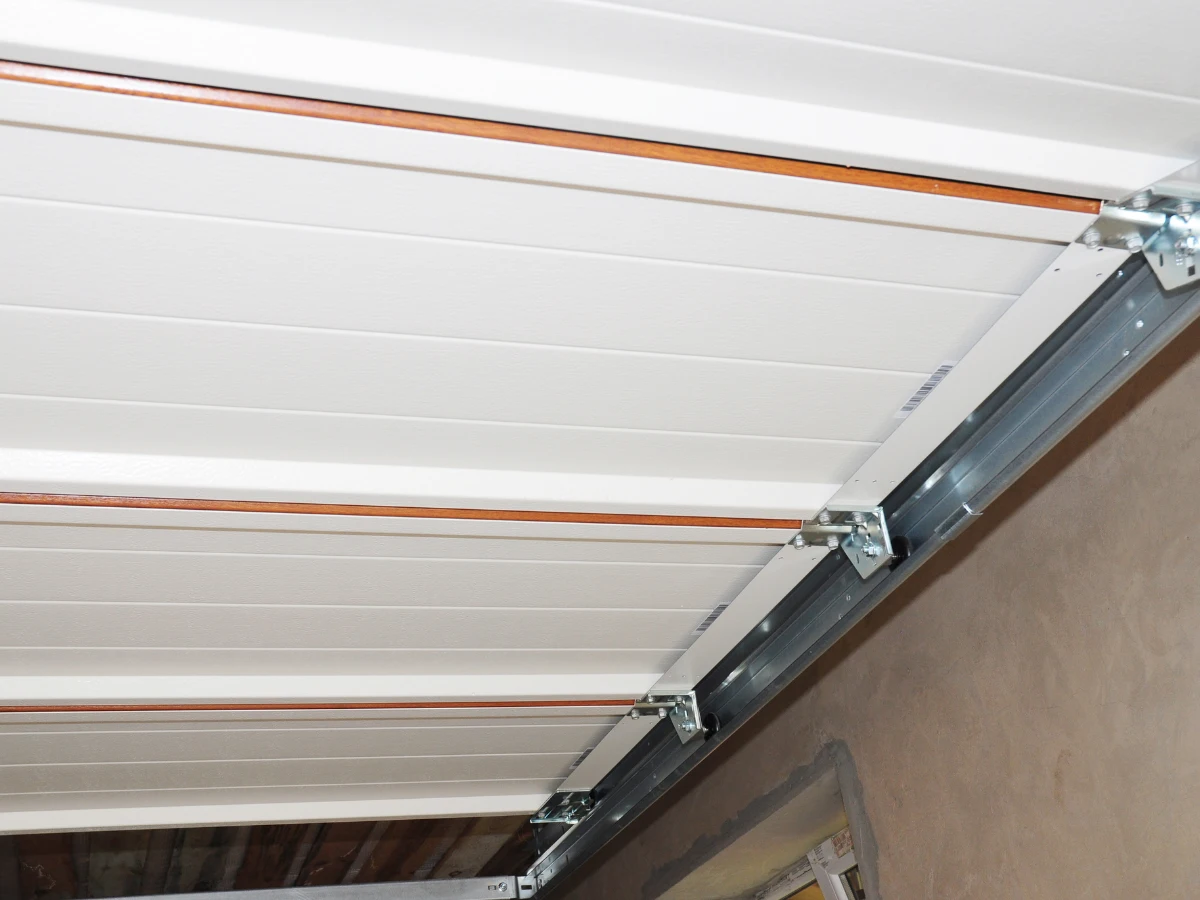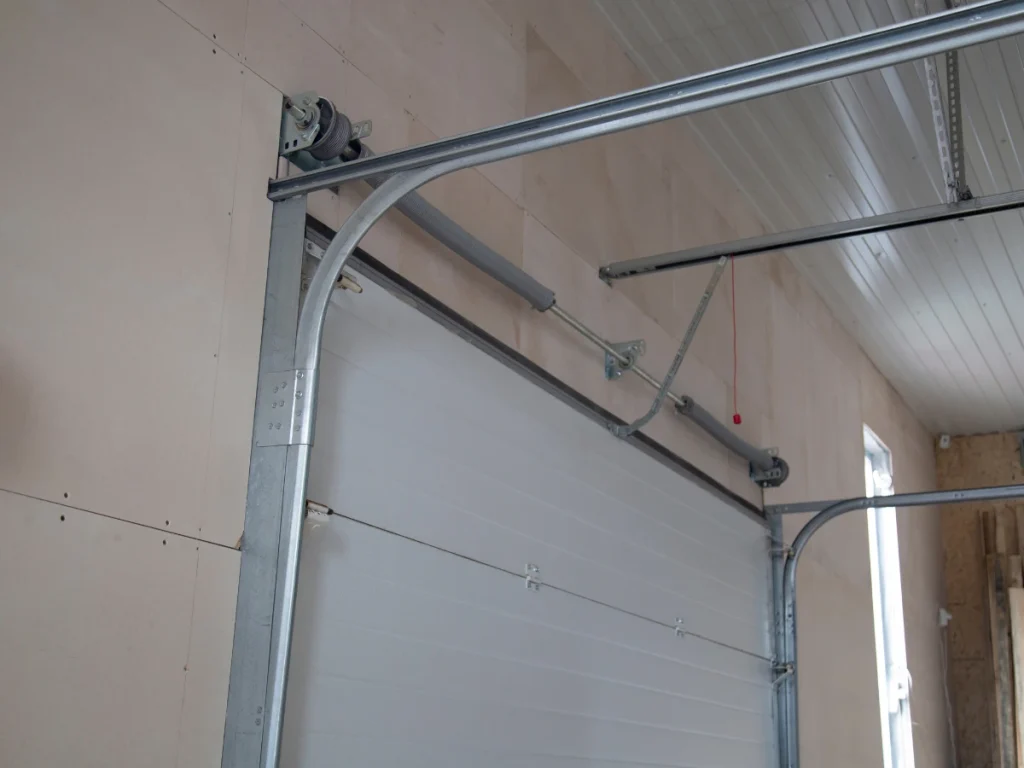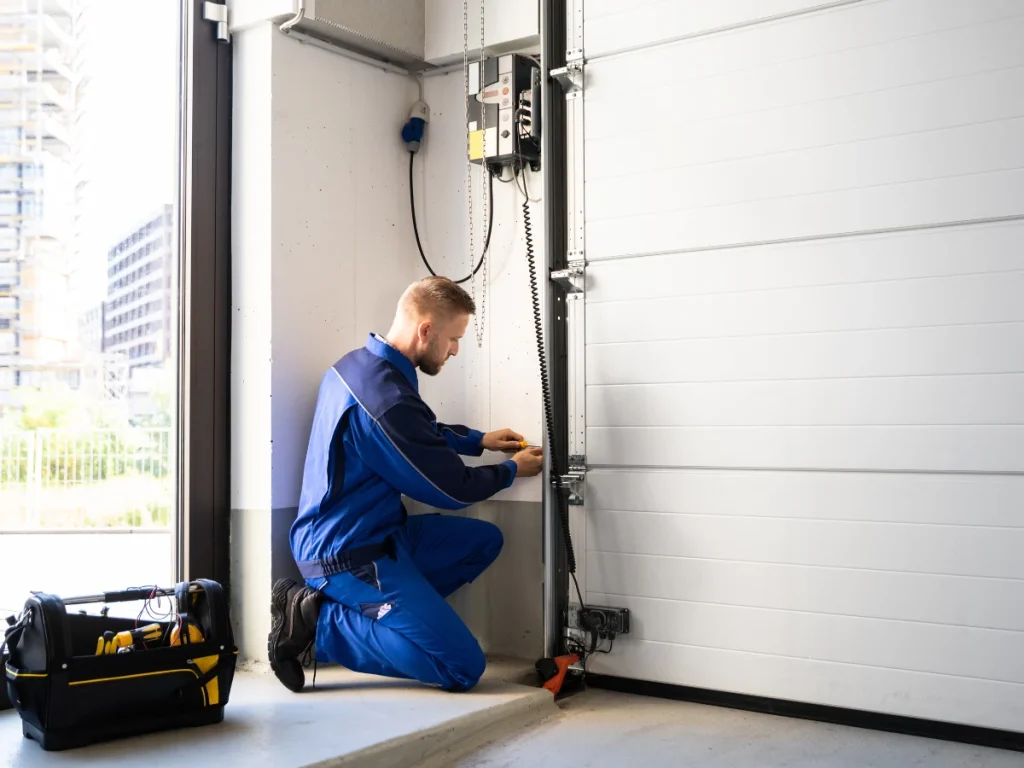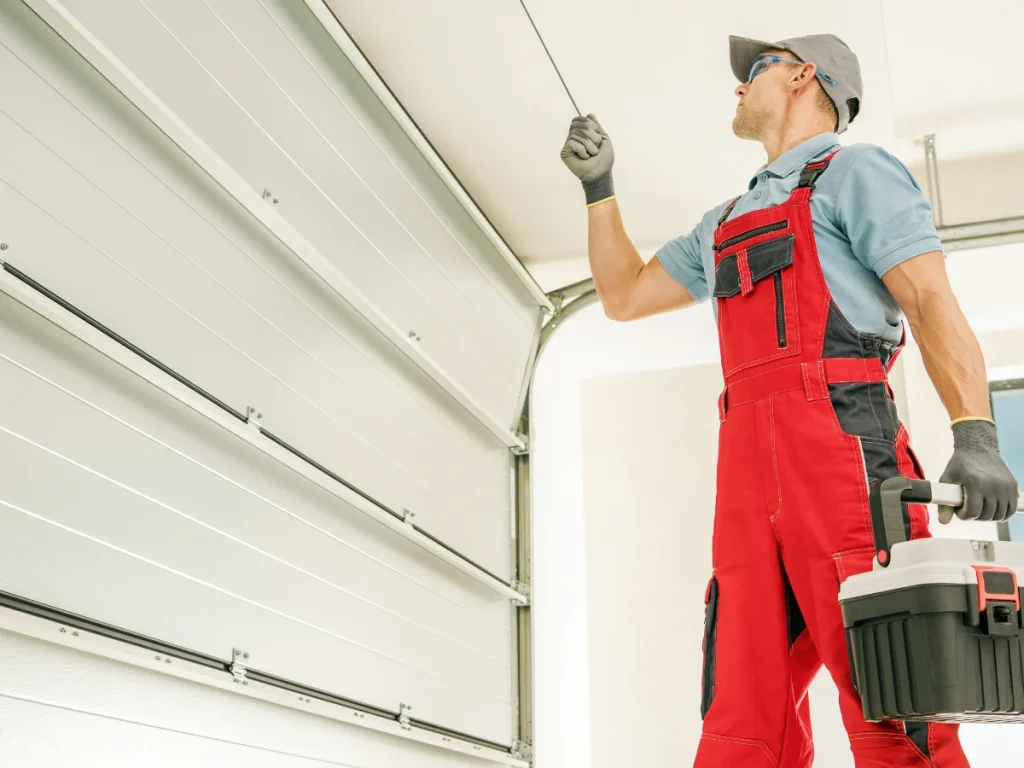A noisy or jerky garage door can signal more than just an inconvenience. It’s often a warning sign that your garage door rollers need attention. When rollers break, they can mess up the whole system and cause safety risks. You might want to fix it yourself, but garage doors are tricky and can be dangerous. That’s why it’s best to understand what’s involved and let a professional handle the repair.
What Are Garage Door Rollers?
These are small wheels attached to a stem, and they fit into the metal tracks on either side of your garage door. As the door opens and closes, the rollers glide along the tracks, keeping movement smooth and controlled. Rollers come in a few materials: plastic, steel, or nylon. Nylon is the quietest and most durable option for residential use.
Garage doors typically cycle 1,500 times per year on average, which adds up to a lot of wear and tear on rollers. Most rollers last up to 20 years, depending on quality and usage. If not maintained or replaced when worn out, they can cause issues with the garage door opener, misaligned tracks, or broken springs. This small part is important for the overall health of your system.
Why Garage Door Rollers Matter
You might not think twice about the rollers on your garage door, but they play a huge role in how smoothly and safely your door operates. These small wheels guide your garage door along the metal tracks every time you open or close it. When they’re in good shape, your door moves quietly, evenly, and without effort. But when they’re worn out or damaged, things can go downhill fast.
Here’s what can happen when rollers start to fail:
- Loud grinding or squeaking noises: As rollers wear down or collect dirt and debris, they start making unpleasant sounds. That noise is more than annoying—it’s a warning sign that something’s wrong.
- Jerky, uneven door movement: A garage door should glide up and down smoothly. If your door shakes, stops, or has trouble moving, broken rollers are often the cause.
- Door misalignment or off-track issues: Worn rollers can misalign the door. This can lead to the door jumping off its tracks, which is dangerous and expensive to fix.
- Strain on your garage door opener: When rollers don’t move freely, the opener motor has to work harder to pull the door. This added strain can shorten the life of your garage door opener and lead to other breakdowns.
- Increased risk of accidents or injury: An off-track or stuck garage door is more likely to slam shut or fall unevenly, which puts your family and property at risk. Good rollers help prevent this by keeping the door balanced and secure.
Rollers that are cracked, rusted, or completely broken can even stop your garage door from working at all. That’s why staying on top of garage door maintenance is key. Routine checkups can catch small problems before they become big ones, keeping your home safer and your day running without disruptions.
How to Change Garage Door Rollers with Professional Help
Unlike a quick DIY fix, a professional garage roller door repair is more detailed and thorough. Here’s how a trained technician typically handles roller replacement:
1. Inspecting the Entire Garage Door System
Before replacing anything, the technician carefully looks over the entire garage door. They check the rollers, the tracks they roll on, the metal parts that hold everything together, and the springs that help lift the door.
If something like the garage door springs is worn out or broken, it can put extra strain on the rollers and cause other parts to wear out faster. By spotting these problems early, the technician makes sure the whole system stays balanced and safe.
2. Unplugging the Opener and Lifting the Door
For safety, the technician disconnects the garage door opener. Next, they manually lift the door to a raised position. This prevents the door from moving unexpectedly while they work. Safety is a top priority during every garage door roller repair.
3. Holding the Door in Place
After raising the garage door, the technician makes sure it stays secure. They use clamps or locking tools to prevent it from slipping or falling. This keeps both the technician and your door secure while they work on it.
4. Taking Out the Old Rollers
After the door is secured, the technician removes each old roller one by one. On some doors, this means carefully sliding them out of the metal tracks. On others, they may need to loosen a few parts to reach the rollers. Damaged or rusted rollers are taken out and replaced with fresh, smooth ones.
5. Installing the New Rollers
New rollers are installed in the same spots. Most professionals recommend high-quality nylon rollers because they are quieter and tend to last longer than metal or plastic options. The technician checks that each roller fits properly and moves smoothly inside the track.
6. Lubricating Garage Door Rollers and Testing Everything
After the new rollers are in place, the technician applies a garage door-safe lubricant to keep them rolling smoothly. Then, they will open and close the door several times to test how it moves. If anything seems off, they make adjustments to ensure the door operates quietly and evenly.
Why Call an Expert Instead of DIY
Even though you may be wondering how to replace garage door rollers on your own, keep in mind that replacing rollers isn’t a simple task. Most garage doors weigh between 100 and 400 pounds and are held together by high-tension components.
Replacing rollers may seem simple, but it usually requires disassembling parts of the track or hinge system. One wrong move and you risk damaging your door, your opener, or worse—injuring yourself.
Here’s why professional help makes a difference:
- Safety First: Professionals know how to handle heavy doors, sharp edges, and high-tension parts safely.
- Trained Eyes: A technician can spot related issues that might be missed during a DIY repair.
- Tools & Experience: Pros come equipped with the right tools and the know-how to get the job done quickly and correctly.
- Long-Term Value: Proper installation helps your rollers last longer and keeps the whole garage door system working smoothly.
- Warranty Coverage: Many garage door repairs are backed by warranties when handled by licensed technicians.
Trying to cut corners might save a little now, but it often leads to bigger problems later. Working with a qualified technician keeps your garage door in top shape and protects your home investment.
Keep Your Garage Door Rolling Smoothly With Professional Help
These rollers may be small, but they have a big impact on how your garage door operates. If your door has become noisy, jerky, or feels off-track, don’t wait for things to get worse.
Call Arizona Garage Door and Repair today or contact us to schedule professional garage door roller repair. Your garage door deserves expert care.




